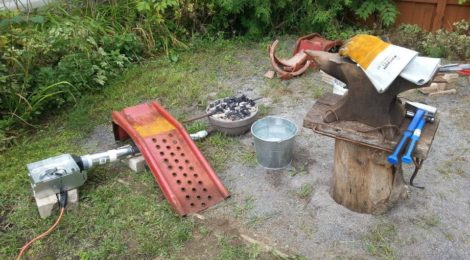
Forge 2.0 & 3.0 – 30/06/2013 – 02/09/2013
Having taken from the experience of Forge 1.0 that unrestricted propane flow was too costly for a student’s hobby, I decided to go to the pure basics of forge designs. The second forge design would be a coal burning forge with a tuyère set inside a ceramic flower pot. The fire bricks would be used to support a 3/4″ black iron pipe which had six 1/8″ spaced over a 6″ length. Gravel was put underneath the bricks to fill the void.
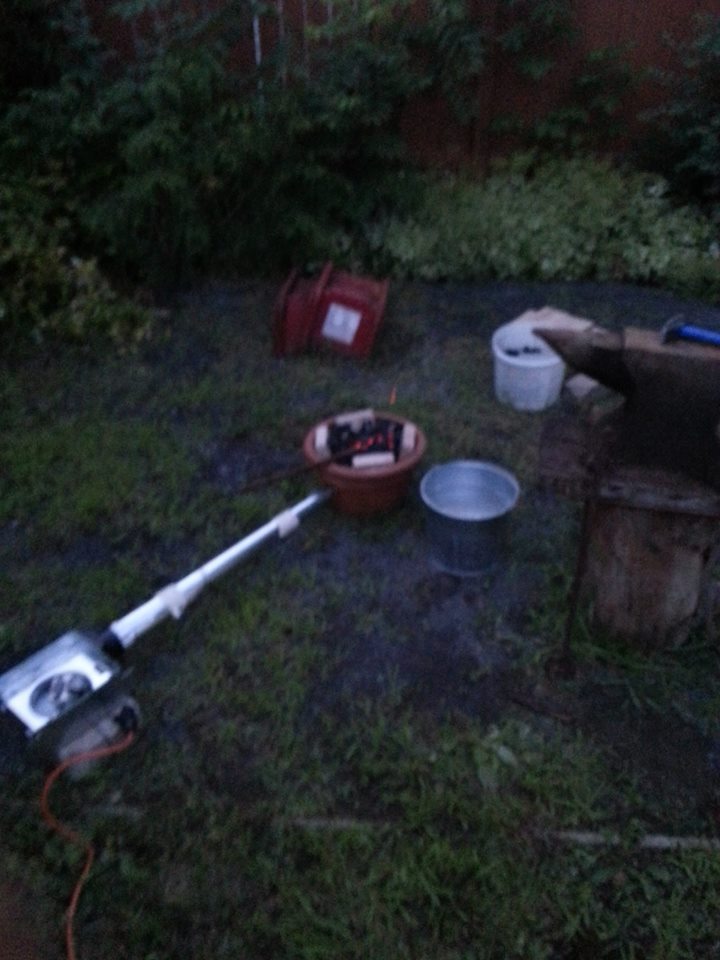
The tuyère was feed with a 50 scfm bathroom fan. This provided ample air to the hearth to reach iron melting temperatures at full blast. The location of the tuyère was a bit too low with respect to the rim of the flower pot. This restricted the placement of the work piece. To get it to forging temperature, it needed to be stuck into the coals, allowing only the tip to be warmed.
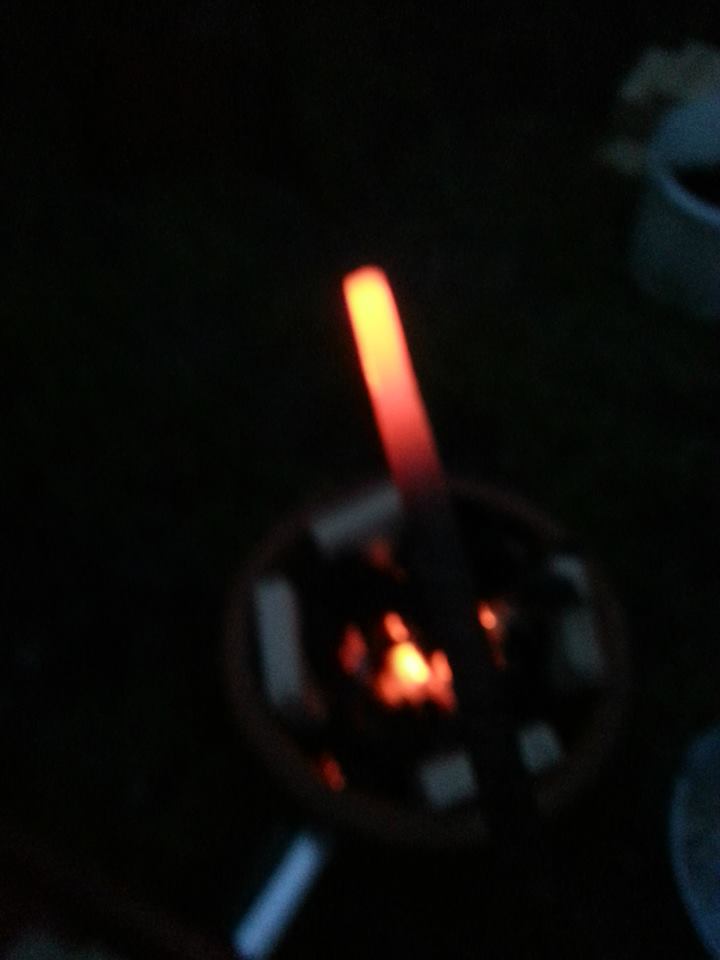
It turns out that the flower pot clay, wasn’t as heat resistant as I had expected. The thermal cycles started to take their toll rather quickly and when I attempted to move the forge to a more convenient location, the rim snapped off, and the rest fell and shattered.
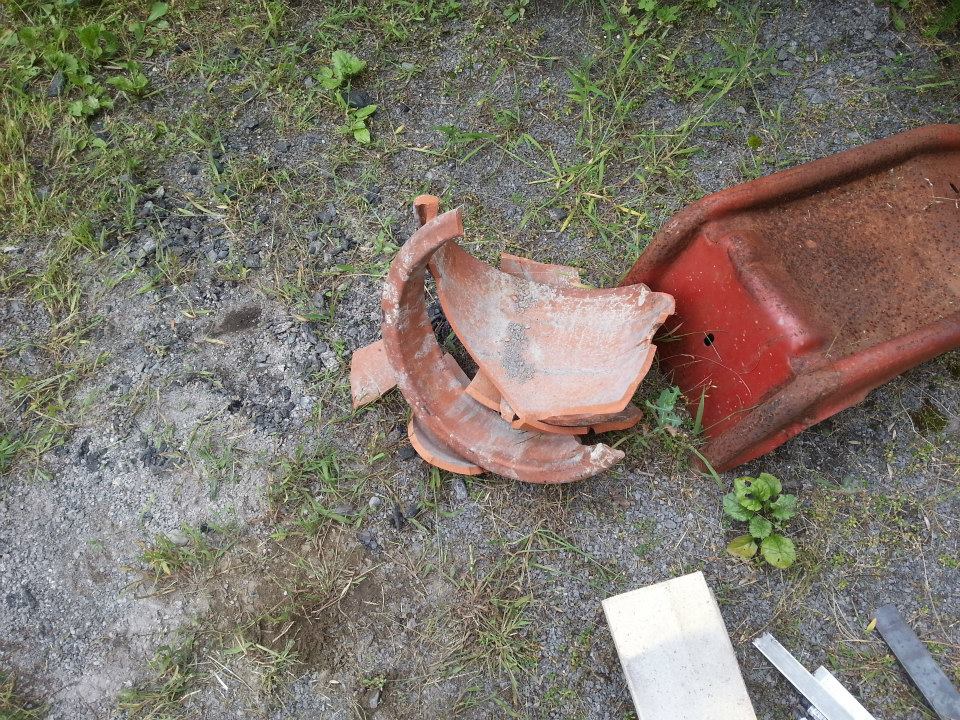
Fresh from the ashes an new forge makes more! With the lessons learned in the version 2.0, the next forge proved more useful and slightly more resilient. The flower pot this time was an ash based clay, this seemed to hold up better. The firebricks were placed in a V shape with the tuyère running in the bottom. The effective heating length could now be fully utilized.
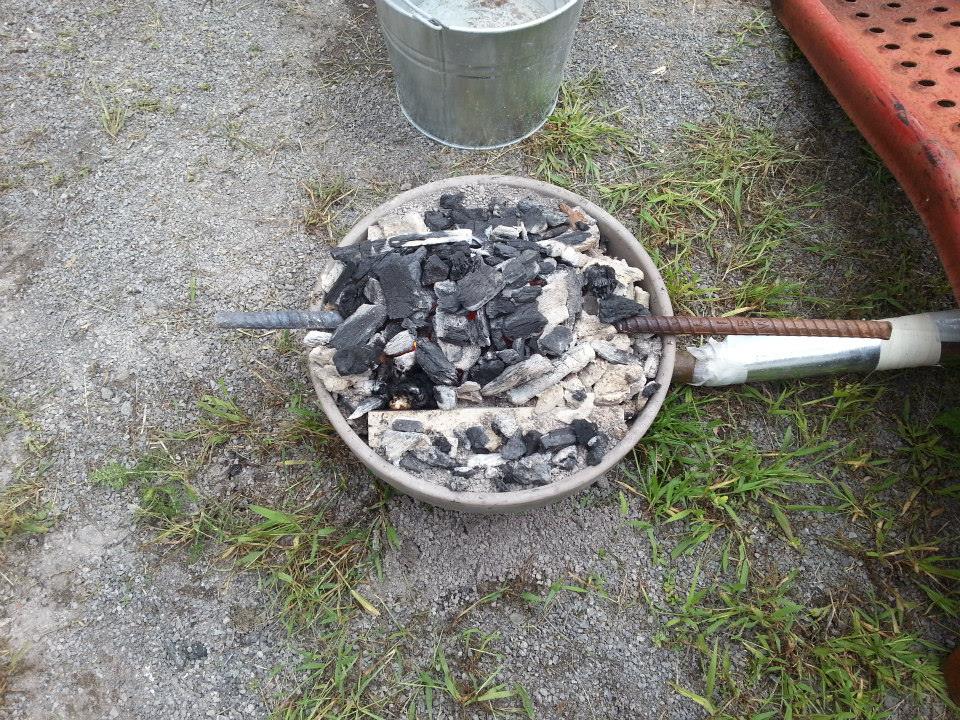
As seen above, the fuel used was barbecue charcoal, it’s completely usable and will get hot enough to melt away your steel if you leave the tip deep inside the hearth. Now compared to coal, you have to compensate and use much more fuel by weight. It’s not efficient, but it’s readily available in every store during barbecue season.
It was enough for me to actually start working on learning to smith. First on the list was the tools necessary to handle the fire and the steel. A hold fast provides an easy way to hold the work on the anvil, while a fire rake makes the hearth management easier.
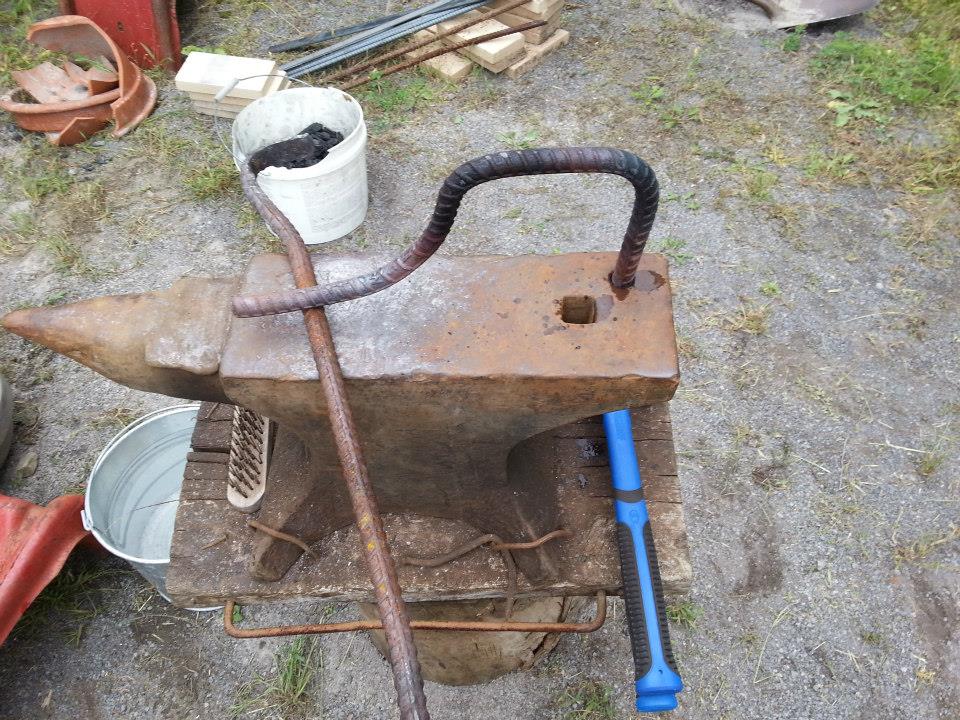
The major drawbacks of this setup were the lack of air flow control on the bathroom fan and the lack of ash management. As the fire would burn through the day, the ash had nowhere else to go but into the tuyère pipe. During operation with the fan on, that’s not an issue but once off there was no cleaning effect. Also the location of the forge left it exposed to rain, which would bring the ash into a cement like consistency clogging the pipe.
